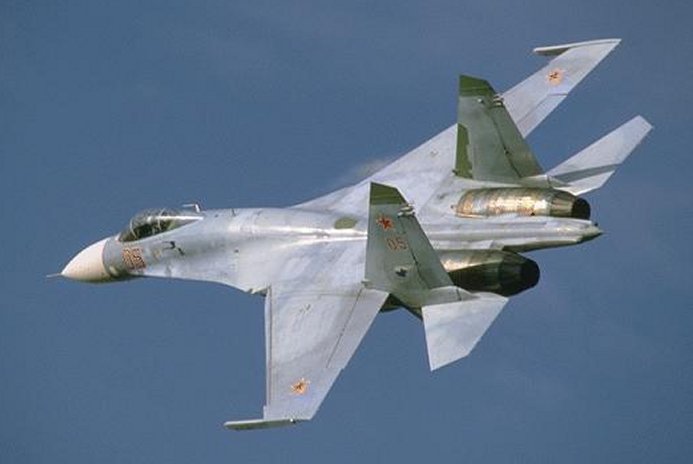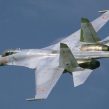
Russia Forms New Aerospace Defense Structure
Publication: Eurasia Daily Monitor Volume: 8 Issue: 201
By:

Planning to create a new branch of service in the Russian military, Aerospace Defense (Vozdushno Kosmicheskaya Oborona –VKO), has reached its final stages with its formal completion due on December 1, 2011. The nature of these changes, timescale and attending uncertainty will have profound implications for the future of Russian defense planning. Recently, as a result of moves to form the new structure speculation has mounted that the Russian Air Force (Voyenno Vozdushnye Sily –VVS) may prove to be a casualty of the initiative, with it moving from an arm of service to a directorate subordinated to the VKO. While the defense ministry officially denied this, there is little doubt that the VVS will experience significant turbulence in the years ahead. Overall, as the VKO emerges more clearly in its final form by 2016 it may yield more questions than answers and leave many wondering about the quality of central planning or the fate of the rearmament program to 2020 further burdened by an expanded and costly high-tech branch of service (Interfax, October 4).
On October 5, Moskovskiy Komsomolets reported that the VKO was being formed as anticipated on the basis of the Space Troops and that officers from the VVS High Command were moving to the space Troops as part of this process. The article citied anonymous sources as saying that the VVS High Command would be disbanded and linked the impending loss of status for the Air Force to the earlier blow of being subordinated to the reformed military district system in December 2010. Colonel Vladimir Drik, the official defense ministry spokesman rebutted these claims, stating that the VVS will remain an arm of service (vid) while the VKO will be a branch of service (rod): but the denial did nothing to clarify the future relationship between the VVS and the VKO (RIA Novosti, October 6; Moskovskiy Komsomolets, October 5).
The roots of the confusion emerged in August, when Kommersant reported fresh details on the concept for the VKO which was approved in April 2011. Much of the article speculated on whether the Commander of the Space Troops, Lieutenant-General Oleg Ostapenko might head the new VKO. However, Ivan Safarov suggested the General Staff’s plans for the VKO envisaged moving air defense and missile defense systems into the new structure, since it would combine the Space Troops and the Joint Aerospace Defense Command, formed on the basis of the defunct Moscow PVO (Air Defense) District Special Command. The Chief of the General Staff, Army-General Nikolai Makarov said the combined system would act as an umbrella covering Russia against attack by ballistic missiles, medium-range missiles and various cruise missile platforms. S-400s and the S-500s under development would in future form the equipment basis for the VKO. Viktor Ozerov, the head of the Federation Council’s Defense and Security Committee described the VKO creation in terms of stages, involving in its first stage (2011-2016) unifying the Space Troops and existing air defense assets from the “branches and combat arms of service” (Kommersant, August 10).
Colonel-General Aleksandr Zelin, the Commander of the VVS, also faces an uncertain future; some speculate he could be a candidate for the top post in the VKO though he may in any case lose his current command. The VKO is likely to form three command and control (C2) centers: Zarya features among the possible locations (located in the territory of the current VVS main command), the second may be at Krasnoznamensk, (a space C2 center) and the headquarters of the Space Troops in Moscow (Kommersant, August 10).
On October 4, Ostapenko said the VKO will have its own space command, responsible for the tasks previously assigned to the Space Troops. The VKO would implement tasks linked to space and anti-missile as well as anti-aircraft defense. Ostapenko explained that the new structure would compel adjustments to the officer training programs and the system of scientific and technical provision for research and experimental work. A key issue would be to ensure the full integration of all segments in the VKO into a joint command structure. In August, sources in the General Staff stated that by 2015 the VKO will receive new radio-technical equipment and aircraft, in addition to S-500 complexes. The underlying message was clear: the VKO will be formally announced in the battle order by December 2011 but the work to make it fully effective and decipher its implications will continue for several years (Interfax, Krasnaya Zvezda, October 4; Krasnaya Zvezda, August 15).
In an added layer of complexity, the future of air defense in the Ground Forces was addressed in a recent lengthy article by Major-General Aleksandr Leonov, the Commander of the Ground Forces PVO. He outlined its developmental priorities until 2015, forming highly mobile formations, units and subunits equipped with state-of-the-art models of arms and technical equipment, and linked the formation of the VKO to further structural change in the Ground Forces PVO as the latter will become part of the former (RIA Novosti, December 26, 2010). The 2011 State Defense Order envisaged procuring 400 pieces of missile and artillery armament and automated C2 equipment, radiotechnical reconnaissance and electronic warfare equipment, and a new surface-to-air missile (SAM) complex. This will equip three command posts of SAM brigades with automated C2, a Motorized Rifle Brigade with the Barnaul-T KSA (automation equipment), a state-of-the-art SAM system for rearming PVO subunits in the Eastern Military District (MD), re-equipping the SAM brigade with modern military specialist equipment, procuring Buk complexes in the Eastern MD, and also outfitting PVO subunits with advanced portable SAM systems. Leonov believes the SAM brigades will complete their formation by 2017. A modernized system for training all categories of tactical PVO specialists will be required, in turn adding to demands for greater numbers of kontraktniki. A new combat training center to facilitate this process will be created on the basis of the 67th Combat Training Center. However, Leonov pointed out that the concept to develop Aerospace Defense to 2016 and beyond will compel a three-level division of SAM systems in Ground Forces PVO (Vozdushno-Kosmicheskaya Oborona, https://www.vko.ru/DesktopModules/Articles/ArticlesView.aspx?tabID=320&ItemID=456&mid=2869&wversion=Staging).
Will moving air defense assets into the VKO involve transferring all or some platforms from the VVS, or is a more selective approach planned? No mention was made of whether the VVS would retain MiG-31 fighters, since the VKO’s formation may require such cruise missile interceptor capabilities (RIA Novosti, October 6). What is clear is that the process of clarifying these issues will stretch over a five year period, and if the attempted reform of the conventional Armed Forces serves as a model, much might be subject to experiment. The real planning may well be written in pencil. It is clear that despite Defense Minister Anatoliy Serdyukov claiming that the structural transformation of the Armed forces has now given way to a new stage, that significant structural reorganization remains ongoing. In terms of the VKO, the implications for the VVS and its service prestige are far from clear.




